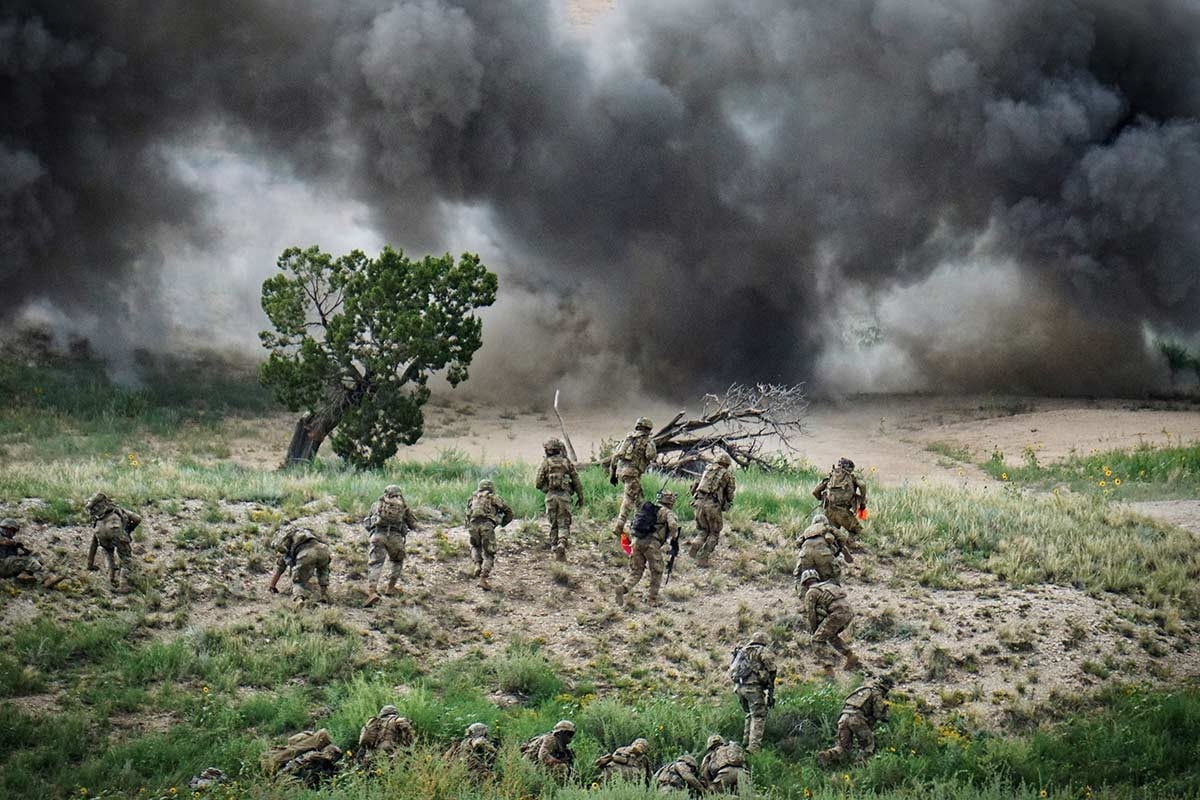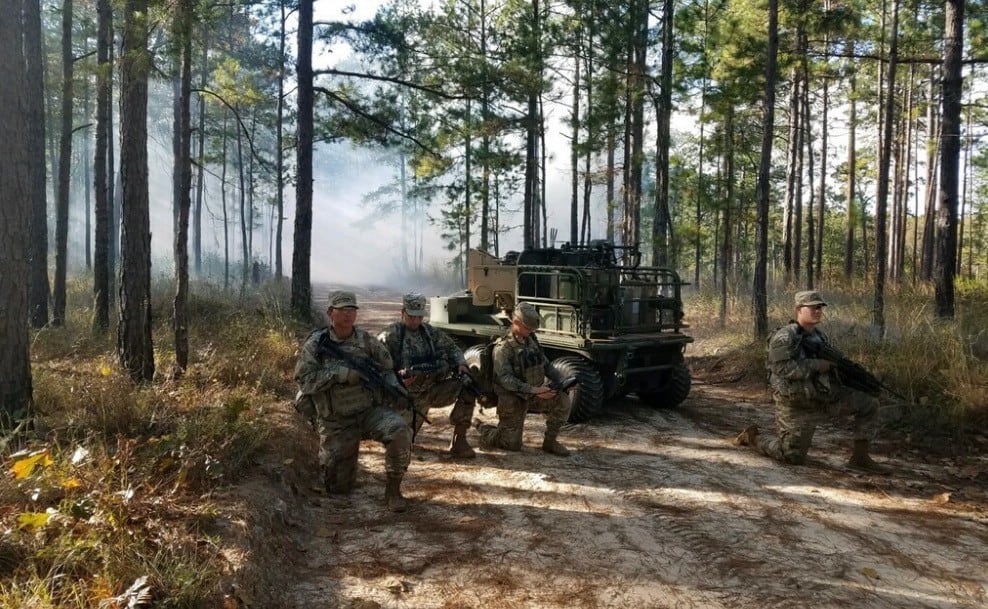In the next decade, the Army hopes to use robotics and other technologies to make a single infantry platoon 10 times more effective on the battlefield than they are today.
The program shepherding those tech solutions had planned a demonstration last year, but it had to be put on hold, said Ted Maciuba, deputy director of the Robotics Requirements Division, during the annual industry days conference of the Maneuver Capabilities Development and Integration Directorate at Fort Benning, Georgia, April 7.
In the coming weeks, Maciuba and his team will sort through submitted ideas on how artificial intelligence, sensors, robots and other technology can be used to increase the distance platoons can see and shoot, and how they can speed up decision-making.
RELATED

Once the team comes up with tech to demonstrate, the infantry platoon will have work to do.
The platoons will integrate, in manned-unmanned teams, with robotic “prototype ground, air, water and virtual systems” that increase the unit’s “lethality, mobility, protection, situational awareness, endurance, persistence and depth,” according to the presentation.
Planners also expect to see AI tools for making decisions 10 times faster, taking information from a variety of platforms, sensors and higher echelon intelligence to create a “coherent picture and provide that picture to soldiers.”
While they’re looking for new solutions, a host of existing efforts are underway, many of them part of a larger robotic strategy released in 2018.
Over the next three years, the plan is to run the 10x platoon demonstration, improve long-range reconnaissance and counter-small drone tech, incorporate the Next Generation Combat Vehicle program’s Robotic Combat Vehicle, and other network-related efforts.
From 2024 to 2028 they expect to field the light and medium versions of the RCV while also adding cheap, lightweight, expendable robots to the formations.
By the 2028 to 2035 timeframe, all combat formations should have access to persistent air and ground robotic capabilities commanded by soldiers, according to the presentation.
Currently, they’re developing the Small Multipurpose Equipment Transport, or SMET, and Common Robotic System-Individual, or CRS-I, both of which are scheduled to be fielded, along with a short-range reconnaissance robot for platoons.
The effort fielded the Soldier Borne Sensor, a palm-sized microdrone that’s since been deployed with troops to Afghanistan and elsewhere at the squad level.
Each of those platforms comes with associated equipment.
“We’re trying to reduce both physical and cognitive load-putting on soldiers,” Maciuba said. ”The biggest concern now is every time we put a system into formation, it’s one for one. It’s a soldier on the other end of that, controlling the system. Trying to get away from that, reduce load.”
One way to reduce both the physical load and training demands is to make a single controller that can operate all of these tactical-level robots.
The Universal Robotic Controller currently being developed will be able to control the soldier-borne sensor, SMET, short-range reconnaissance and CRS-I, and later work seamlessly with long-range reconnaissance, the RCV and a future exoskeleton, among other systems.
The plans is for the URC to be ready within the next few years and be able to control all of those devices while later accessing AI, cloud services and a variety of other technologies by or before 2027, according to the presentation.
Todd South has written about crime, courts, government and the military for multiple publications since 2004 and was named a 2014 Pulitzer finalist for a co-written project on witness intimidation. Todd is a Marine veteran of the Iraq War.





